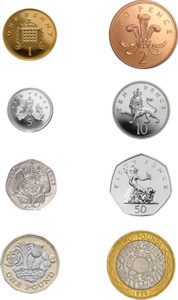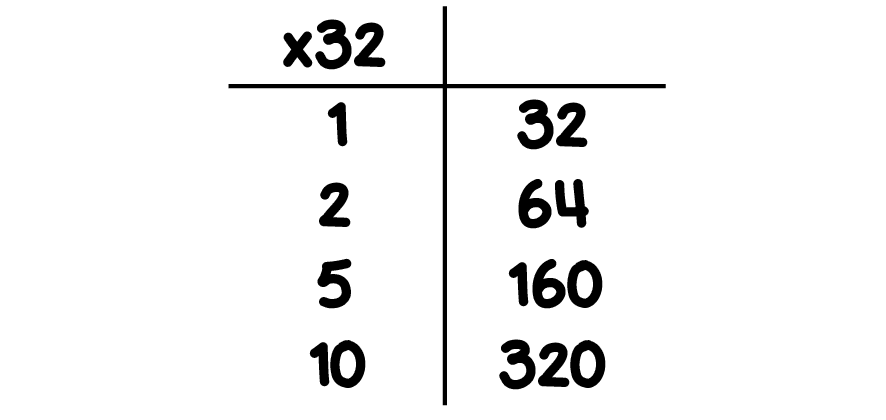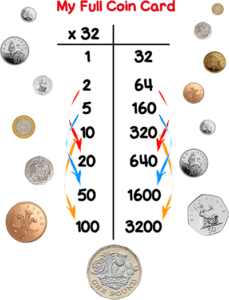Coin Multiplication
Children recognise the coins that we use every day. Coin Multiplication teaches them to take a number (usually a 2d number) and then find the 1st, 2nd, 5th, 10th, 20th, 50th and 100th multiples of that number. If we include the £2 coin on our coin card, that means they find the 200th multiple as well. Our job is to show children how all of these multiples can be found simply by:
- multiplying by 10,
- halving and
- doubling.

Step 1

The first of the 5 steps for Coin Multiplication introduces us to a ‘1, 10 Card’ and shows us how to set it out. The 1st multiple is the number itself and the 10th multiple is the number itself, but this time made 10 times bigger.
Step 2
The second step extends the ‘1, 10 card’ idea to produce a ‘1, 2, 5, 10 card’. Start with ‘easy’ numbers that lend themselves to getting the correct answers.
- Start as before by using the 1st multiple to find the 10th multiple
- Find the 2nd multiple by doubling the 1st multiple
- Find the 5th multiple by halving the 10th multiple
Well done! This is a completed ‘1, 2, 5, 10’ Coin card. Keep practicing with a 1, 2, 5, 10 (spaces added) card until you can complete quickly (without having to use their fingers) delete before attempting the next step.

Step 3

Now we extend the same ideas to write out a ‘Full Coin Card’. This includes using the 2nd multiple to find the 20th, using the 5th multiple to find the 50th. Then using the 1st multiple to find the 100th, and the 2nd to find the 200th. Once we have written out all these multiples (1st, 2nd, 5th, 10th, 20th, 50th, 100th and 200th) then we have a ‘Full Coin Card’! Congratulations! Now, practise with lots of different starting numbers (mainly using 2 digit whole numbers). The challenge is to be able to write a Full Coin Card like this for any 2 digit number in less than 60 seconds! Remember to always fill in the multiples in this order: 1st, 10th, 2nd, 5th, 20th, 50th, 100th.
Step 4
Once you can write out a ‘Full Coin Card’ fluently, try adding 2 of the coin multiples together. For example, you can find the 21st multiple by adding the 20th and 1st multiples together, or find the 52nd multiple by adding the 50th and 2nd multiples together. Try finding different variations of which multiples you can find, and combing this with different starting numbers.
Step 5
At Step 5 we add 3 different coin multiples together. For example, you can find the 121st multiple by adding the 100th, 20th and 1st multiples together, or find the 252nd multiple by adding the 200th, 50th and 2nd multiples together.
